





Guillermo De Toro 2006
First Response
Critical score: 8/10
I enjoyed the film, the fantasy created through the underworld and mythical creatures blurred the line between real-life and fantasy. I think this was done really well as the fantasy elements appeared in the real world of Spain in 1944, post-civil war era. I enjoyed how this was a period piece and the Spanish history portrayed through a powerful story of the need for disobedience.
Stand out scene: The stand out scene for me, is when Mercedes and Ofelia are caught trying to escape the mill by Captain Vidal and his men. I really enjoyed the sound effects here as they added a lot of suspense to mirror Ofelia’s apprehensiveness as she asks Mercedes if she also heard the noise, she says know then lowers her umbrella and is faced with a crowd of soldiers. This scene is also where Mercedes is found to be working with the rebels highlighting the theme of disobedience as she is meant to work for the Captain as a housekeeper. I think this is where the story turns as the battle starts to intensify.

The key characters:
Ofelia – daughter of Carmen
Carmen – heavily pregnant ‘new’ wife of Captain Vidal
Captain Vidal – Soldier in Franco’s Army
Mercedes – housekeeper
Doctor
Officers and Soldiers in Franc’s Army
Communist / Left wing rebels (including Mercedes’s brother Pedro)
Fantasy characters:
Pan (a faun)
Faries (x 3)
The Toad under the tree
The Pale Man
The King and Queen of the Underworld
10 things that the viewer knows in the 1st 10 mins.
-There are two different worlds, real and fantasy (underworld)
-There is a missing princess of this fantasy world
-The film is set in Spain after the Civil War (1944)
-A mother and daughter are travelling to their “new life” where the mother will get married
-Ofelia has a large interest in reading, Carmen does not fully approve of this as it leads Ofelia to believe in mythical creatures such as fairies
-Captain Vidal is Carmens new husband and is very controlling of her difficult pregnancy and behaviours, does not value her only wants her as a birth giver to a son for him
-Carmen doesn’t particularly like being given orders “I can walk perfectly well” but she is obedient anyway
-There is a labyrinth at the Mill which Ofelia is not allowed in, reenforced her fantasy beliefs
-The creature Ofelia sees and believes to be a fairy follows her to the Mill, as we see the fairy creature in the labyrinth highlighting the supernatural element.
-Mercedes has an interest is the soldiers plans despite being a housekeeper, foreshadowing her involvement in the conflict between Captain Vidal and his men vs the rebels.
Cinematic breakdown of the 1st 3 mins.
Camera work is very fluid and is almost constantly moving. The film opens by moving to the left as Ofelia is lying on the ground (we see her facing upwards as she is rotated) with blood dripping out of her nose, this is a canted angle. The camera then rotates so she is seen to be lying across the screen on the ground and time is going backwards as the blood is going back up her nose. Audiences are instantly told she will suffer as the narrative is non-linear as the final scene before the epilogue is seen in reverse at the beginning of the film. The camera pushes in as it rotates until it pushes right into her eye as there is a cut to black going into a long shot of the fantasy underworld. The camera ten pushes into a doorframe giving a sense of motion followed by a push up and a fade to white. The camerawork is very creative as it tracks behind a pillar into a wipe edit. There is then a dissolve back into reality of a long shot of post-civil war Spain which is a more traditional style of editing and camera movement.
Micro-elements:
Sound:
The Sound Design of the effects that accompany the violence is very realistic. This is most likely enhanced in post-production by Foley artists. As parts of this film fit a horror genre this adds to the horror and emotional impact of those violent actions on the viewer. There is also a music motif in the Lullaby that is sung to Ofelia. It can be diegetic when sung by an on-screen characters (the Mother or Mercedes) but it becomes the theme tune for the film taking on a number of different musical forms (orchestral) adding to the suspense in places or the emotional state of Ofelia (rather like the ‘Time Goes By’ tune is manipulated in ‘Casablanca’.)
Cinematography:
The cinematography used is critical to establish key characters throughout the film. For example, the first scene introducing Captain Vidal we first see his watch, highlighting his strict punctuality and his distaste for others not being on his schedule as he then complains about Carmen and Ofelias late arrival. We later learn the watch belonged to his father, and by this watch being the first of the Captain being shown, it reflects how he values his masculinity and closeness to his father above everything else.
Mise-en-scene:
Through Del Toros influence the film has an idiosyncratic style through the mise-en-scene (the film received Oscars for both production design and make-up). The costumes worn add to the historical context of the film which was set in Spain in the post-civil war era (1944). Many of the men are wearing uniforms highlighting their roles as a soldier, showing that there is still a lot of civil unrest in Spain during the period, reflecting how Pan’s Labyrinth is a period piece.
Editing:
The style of editing throughout the film is overall quite conventional however there are still some less conventional editing techniques used such as cross-dissolves to black. This helps to separate the real-world from the fantastical underworld. An example of this is at the beginning of the film when the camera tracks into Ofelias eye as she lies on the floor of the labyrinth dying and we are transported to shots of the fantasy underworld. This helps to distinguish the fantasy element right at the start of the film. In addition, by tracking into Ofelias eye giving a close-up of her injury the film is also automatically shown to fit into the horror genre.
CGI- Computer generated image
Representation (Gender)
How are men and women represented differently and how does this position the viewer?
All the men in the film are shown to be purposeful, they are either soldiers, farmers or a doctor, whereas the women in the film are often in subservient roles like a wife (Carmen) or housekeepers (Mercedes). Gender roles are quite traditional in the film especially Captain Vidal as he is desperate for Carmen to birth a son for him instead of a daughter like Ofelia (who he is continuously dismissive of) and he refuses to believe it would not be a son that is born. There is a prominent binary opposite for gender roles in the film, Captain Vidal is determined for his son to be born close to him with the health of his wife Carmen to only be a secondary concern (seen when he asks if they must choose to save the baby over her).
Aesthetics
What is the ‘look of the film’? How has this been achieved?
Consider colour palette / music, realism v fantasy, magic realism (find out what this means in literature), Lighting.
Pan’s labyrinth has a gothic aesthetic; Del Toro uses separate colour palletes and set designs to distinguish the different themes within the film. An example of this is the first sequence of Carmen and Ofelia in bed where the theme switches between fantasy and reality as she tells a story to her little brother in Carmen’s womb causing the audience to switch between Ofelias fantasy story and the reality of her life at the mill creating magic realism. When she is in the real world the colour pallete is very dark with strong contrast and shadows created by the lighting. The set design of the room adds to the gothic aesthetic due to the architecture of their bedroom in the mill. There is a grand bedframe with hard stone and wood throughout the room making it appear frightening to Ofelia. As Ofelia begins to tell the story the real-world bridges into the fantasy world of her story and the colour pallete changes to reds and oranges and we are transported outside reflecting freedom from the mill and the life she feels trapped in. The scene also reflects a connection between dreams and nighttime in the mill again highlighting Ofelia’s love for made-up stories and foreshadows the fantasy occurring later in the film. Pan’s labyrinth is an amazing example of magic realism as it seamlessly blends fantasy into reality seen through the story of Ofelia.
The creatures in the film are artistically made, Tel Toro mixes old school and modern ways to create unique creatures that do not feature in anyone else’s film, he was very specific about wanting them to be original They took inspiration from folklore and old mythology to create these characters. The mandrake was puppeteer work while the Fawn was all an artistically made costume with green screened legs. The fairies were originally still models stuck onto rods which moved them around the scene, the rods were then edited out and the fairies more intricate movements were edited in.
History and Social Contexts
Spanish Civil war ended in 1939; film was set in 1944. The way society is presented is historically accurate. An example of this is Captain Vidal’s banquet at the mill where upper society businessmen and priests were sat with him reflecting how throughout the war, the fascist side worked closely with the church.
Captain Vidal and his soldiers are seen as fascists who are selfish and careless about those who have less power. However, the rebels are seen as caring and a positive force who believe the society should be more equal, unlike the fascists who want a ruling society.
Institutional context
Despite Del Toro being Mexican, the film is considered a Spanish film as it was filmed in Spain and in Spanish using a predominately Spanish crew and cast. Making it classed as a European production.
Del Toro used his and his friend’s money to create the film cutting out the studios so they would have no say in casting and design choices. Pan’s Labyrinth was a “Passion Project”. $19 million went into the film whereas it made $83 million in the box office take, making it a massive financial success. It also won 3 Oscars for best cinematography, best make-up and best art direction. Del Toro then won another Oscar for best director (not for Pan’s Labyrinth but Shape of Water).
Critical score: 8/10
I enjoyed the film, the fantasy created through the underworld and mythical creatures blurred the line between real-life and fantasy. I think this was done really well as the fantasy elements appeared in the real world of Spain in 1944, post-civil war era. I enjoyed how this was a period piece and the Spanish history portrayed through a powerful story of the need for disobedience.
Stand out scene: The stand out scene for me, is when Mercedes and Ofelia are caught trying to escape the mill by Captain Vidal and his men. I really enjoyed the sound effects here as they added a lot of suspense to mirror Ofelia’s apprehensiveness as she asks Mercedes if she also heard the noise, she says know then lowers her umbrella and is faced with a crowd of soldiers. This scene is also where Mercedes is found to be working with the rebels highlighting the theme of disobedience as she is meant to work for the Captain as a housekeeper. I think this is where the story turns as the battle starts to intensify.

Film 1: Pasternak
| What did you like about the film? The ending was memorable and unexpected as we found out how all the people on the plane were connected. | What didn’t you like? The story felt slightly confusing, and it took a while to understand the plot and what was happening. |
| What ideas could you use? Narrative or style? I could use the narrative idea of having a dramatic plot twist that drastically changes the story. | What ideas won’t you use? Why? The violence of the plane crash because it would be very hard to replicate. |
In-Depth Study – Film elements
| Film element | Example |
| Cinematography | I liked the low angle shot at the ending of the film where Pasternaks parents are relaxing in the garden, it gives a false sense of security as it looks very laid back while still creating suspense as there’s a clear view of behind them leading spectators to be apprehensive about the chaos on the plane and what may come. |
| Editing | Again, at the end of the film, the editing stood out to me as the film closed with a freeze frame of the plane about to crash into Pasternak’s parents. It creates an element of dark comedy which I enjoyed. |
| Sound | Sound was incredibly well used at the end of the short film when Pasternacks parents are peacefully sat in their garden, the diagetic sound of the plane increasing tells audience that its getting closer and builds tension. |
Inspirations – what ideas did this film give you for your own short film?
| Cinematography: A lot of the unique shot angles could be easily replicated such as the angle from inside the luggage holder and the low angle reflecting the parents and the plane getting closer. | Editing: The chaotic editing towards the end of the film gives an idea of how to portray the fast pace of the film aside from just the narrative. |
| Sound: I would like to copy the use of sound to build the atmosphere of a scene, rather than to show a setting. | Other: I would like to involve the theme of revenge in my short film similarly to how Pasternack crashes the plane into his parents house for revenge |
Film 2: The Rats/Las Ratas
| What did you like about the film? The lighting and the mix of warm and cool tones and coloring | What didn’t you like? The graphic scenes of the lone shark being stabbed and his son vomiting. |
| What ideas could you use? Narrative or style? The style of the film could inspire the lighting as it has drastic contrasts making its style very unique. | What ideas won’t you use? Why? The violence involved as I think, would be hard to replicate while looking realistic. |
In-Depth study – Mise-en-scène
| Feature | Example – how does it convey meaning or create an effect |
| Set Design | Creates a clear setting of a restaurant and kitchen |
| Costume | Shows the clear roles of the workers in the restaurant (chef ad waitress) and how the man coming in is a wealthy and has a well-paying, well-respected job as he wears a shirt and tie. |
| Space | Despite appearing to be a small restaurant the space does not film cramped. |
| Lighting | The lighting within the short film creates a clear distinction of warm and cool tones, it reflects the differing personalities and beliefs between the chef, reflecting her dark past in prison and her want to kill the man and waitress, whereas she is in the light and wants to let the man live. It also helps develop the films neo-noir vibe. |
| Composition | The man is sat at a table ordering the waitress who is shown stood above him, this juxtaposes where she is places in the hierarchy as she is seen as less than the man who is perceived as rich and powerful. This adds a patriotic undertone. |
| Hair and makeup | The younger waitress appears to be wearing a lot more makeup than the chef in the kitchen as hers is very natural and appears to be non-existent reflecting the large age gap between them and how the chef cares less about herself and what others think of her compared to the younger waitress. |
Inspirations – what ideas did this film give you for your own short film?
| Cinematography/Sound/Editing: The idea of using a variety of shot types, such as low angles and dolley shots to give a wider range of points of view. | Narrative structure: The short film is a good example of a linear narrative structure, but I don’t think I will use this in my own short film as I’d prefer a non-linear narrative structure. |
| Establishing characters, setting, plot, theme: The small number of characters allows all of them to be important to the plot, I will also use a small number of characters to avoid being unable to establish characters. | Creating enigmas: I like the idea of having an ending that is up for interpretation as I think it leaves a lasting effect on audiences. |
Film 3: Bombita
| What did you like about the film? The plot and different shot angles throughout the film | What didn’t you like? The ending was slightly confusing as before the ending the last we saw of his wife was the divorce proceedings and her want for sole custardy of their daughter before the reconciliation in jail. |
| What ideas could you use? Narrative or style? I could use some of the shot types such as the backseat angle as he drives the car. I could also use the circular structure of the film. | What ideas won’t you use? Why? The violence aspect, as I think it would be hard to replicate, and the overall political unrest in the movie as people see “Bombita” as a hero rather than a criminal. |
In-Depth study: All elements
| Feature | Example |
| Narrative structure | It was a circular structure as the film begins on his daughter’s birthday and her cake and then finishes on the father’s birthday and his cake. |
| Establishing characters, setting, plot, theme | Simon, even though. he shows an angry violent nature he isn’t created to be a villain; he is established to be a man frustrated with what he believes to be a corrupt system and despite his actions he loves his daughter and is respected by others in prison. |
| Mise-en-scene | I really like the cake prop, it was shown in the beginning of the film and again a cake at the end, highlighting the circular narrative structure. |
| Cinematography | The range of shot types in the film were used well, especially the scenes of explosions and when the camera follows the cake as it approaches. |
| Editing | The many jump cuts in the film cause it to fast-paces reflection how quickly the protagonist’s life is deteriorating as his anger and frustration towards society grows. |
| Sound | I like the sounds used in the film as they create a sense of apprehension, specifically in the middle of the short film as Bombita becomes angrier and more vengeful. |
Inspirations – what ideas did this film give you for your own short film?
| Cinematography/Sound/Editing: I think I will use similar shot types such as close ups to reflect how characters are feeling. | Narrative structure: I like the idea of having a circular structure as I think it is unique and adds to the plot as it can repeat forever. |
| Establishing characters, setting, plot, theme: It was a good idea to have the main character instantly established as it avoided confusion and allowed for a clear development. | Creating enigmas: I could create an enigma by using scenes from the past and future into the storyline, like Bombita |
Film 4: Til Death do us Part/Hasta que la muerte nos separe
| What did you like about the film? The plot was sporadic and chaotic without being confusing and random. | What didn’t you like? The lighting felt too dark at times, and it was hard to see what was going on. |
| What ideas could you use? Narrative or style? The shot angles are easily replicable and were more unique to ones seen before such as the camera on the swing door and the closing shot of the floor with the broken cakes. | What ideas won’t you use? Why? The graphic injuries seen on both Romana and her husband’s mistress, they would be hard to replicate realistically. |
In-Depth study: All elements
| Feature | Example |
| Narrative structure | It felt like a roller coaster (enforced by Romana referencing a roller coaster when she throws her husband’s mistress) as their relationship and the other characters emotions was constantly going up and down, it was overall quite turbulent and when you expect all the intense moments to be over another one comes. |
| Establishing characters, setting, plot, theme | The characters were well established from the opening scene as we see young photos of them, and they are introduced as newly–weds at their wedding. |
| Mise-en-scene | Costumes made it clear to tell the different characters roles in the wedding party and their relationship to the couple, but they were boring. |
| Cinematography | The cinematography was clever throughout the film such as the intimate ending being clearly portrayed without seeing anything and we rather just see the floor |
| Editing | The editing made the film flow well and it felt less heavily edited due to the smooth cuts and transitions between events. |
| Sound | I liked the mix of non-diegetic and diegetic sound. For example, the music played by the DJ and him being instructed to play. It added realism to the film as it felt more cohesive. |
Inspirations – what ideas did this film give you for your own short film?
| Cinematography/Sound/Editing: I think I will also use a range of fast and slow paces shots and use editing to change the pace like in til death do us part. as it highlights the continuous ups and downs of Rominas moos and her relationship with Ariel | Narrative structure: I could use a similar narrative structure to the short film as it shows the highs and lows of Romina and Arial’s rocky relationship through the narrative. |
| Establishing characters, setting, plot, theme: I enjoyed the different way of establishing characters in till death do us part as we are introduced to them through the bride’s perspective. | Creating enigmas: I could create a similar enigma to till death do us part as at the end, the audience are unsure on how their relationship progresses after the film ends. |
La Jetée (Marker, Korea, 1962) – Analysis Sheet for Evaluative Commentary
Part 1: Brief Reference
| What did you like about the film? The music used and changes at different moments, for example the higher pitch in the romance photos. The overall plot was also good, and the use of photos instead of actual film was unique. | What didn’t you like? The photos could’ve been clearer, was hard to follow at times, although they added to the effect of an apocalyptic setting. |
| What ideas could you use? Narrative or style? The style, I like the order of photos and how they built the background of the plot instead of introducing the protagonist straight away. | What ideas won’t you use? Why? I wouldn’t use the music at as high of a volume as I felt at times it overpowered the voiceover and made it more difficult to understand. |
Part 2: In-Depth Study – Narrative
| Narrative Feature | Example | Your own example |
| Establishing protagonist – what information do we find out? How is it conveyed? | Introduced only in narration – first in third person as “a man marked by an image”; then in first person -memory of incident at the airport. We don’t see him until the first experiment is shown. This shows how core the act of remembering is to his identity – indeed we find out very little about him (he remains nameless) apart from his ‘remembering’ (even when he is travelling in time). | Introduced through one of his memories as a child of a man dying, later learnt to be him dying. Highlighting how we cannot escape the past and the connection between past future and present. This shows the profound effect memories have on us as people (especially the protagonist) and the strength of human connection can overpower his real-time experiences, he always remembers her no matter the time he’s in. |
| Establishing other characters – what information do we find out? How is it conveyed? | The Woman is the first person we see (“the only image to survive the war”) – and she is defined only by the fact the narrator remembers her. Feminist critics may comment on the fact she barely seems to exist outside the experiences of the narrator and her growing belief in him. | The scientists are the first established in present time outside the protagonist’s memory, this could be an early sign of their power over him as he is only used for their benefit and is eventually killed back in the past. |
| Establishing location (time and place) – what information do we find out? How is it conveyed? | We are told immediately that the location was Paris. The bombed-out wreckage of the city (real WW2 images) doesn’t immediately establish that this is the future until the narrator mentions radiation. The underground location beneath the Palais de Chaillot is shown by intercut images of broken cherubs and other sculptures. | The location of their last meeting was a museum, they are looking at animals, dead as a benefit to humans. They are really looking at themselves as soon he will die as he is no longer useful to the scientists. Also, can be reflective of how he was treated as an animal being experimented on with little choice and then being killed once he was deemed unneeded. |
| Creating Enigmas – what are they? How are they created? | The image the narrator obsesses over is the central enigma: who is the man he witnesses dying? How does he die? Who is the woman? The still images and voiceover powerfully evoke the nature of memory. | What other questions are posed throughout the narrative? What is the benefit of his time travelling, how will that help the present if the future is already set? Scientists want to find a way to change the future, or they could just want to see future events. Causes audience to question their motives, did they just want to hurt the man due to a previous hatred? |
| Narrative binary oppositions | The ‘Living Present’ vs Past/Future. As the film progresses, what constitutes the ‘present’ (for the protagonist) seems to shift from his dystopian subterranean society to the ‘past’ of pre-apocalypse Paris. This is conveyed by the faster rhythm of the montage and the sequence (18:00-18:49) where the images almost become like traditional cinema. | Life in the past vs his present, where does he want to stay. I think he wants to be wherever the women is as he continuously returns to be where she is and spends his time during his time travel, with her. |
| Crisis – how was this conveyed? | Is it the first experiment? The moment the man spots the woman from the airport? Or is it when the future society offers him the chance to escape to the future? | What do you think is the crisis point? How does this affect the rest of the narrative? I think the crisis was the protagonist’s realization it was him shot on the pier, it was his worst fears coming true and all his work to overcome the trauma of seeing that man die as a child becomes his reality as he will live both experiences. Shows the idea that you can never escape the past. |
| Resolution – is it closed or open narrative? | The narrative is closed – but it is also in a loop: the narrator is both the dying man and the child watching the scene. This ‘time paradox’ has inspired films as diverse as The Terminator and Looper (as well as 12 Monkeys which is almost a remake). | What do you think about the end? Is it closed – or endlessly circular? It feels like an ending as we do not see him after he is finally shot at the end., however it is circular as he is also seen being shot at the beginning. I think the ending is endless as the cycle can be repeated forever, yet it still felt like an ending as we do not see this happen and there is no more narrative. |
Part 3: Meaning and Effect
| What did you think was the intention of the filmmaker(s)? Intellectual message? Emotional response? Everyone is trapped in their time – they cannot escape it, even though memory. It is also about the concept of photography and cinema itself, trying to ‘freeze’ time with images despite time always being in motion. | How was this achieved? The use of photomontage separates each frame of the story into a frozen image – even though these are joined together using traditional narrative film techniques such as voiceover, dissolves, fades and music. As the man begins to ‘live’ more and more in the ‘past’ with his lover, the space between these frames speeds up to resemble ‘motion picture’ speed at one point. The stuffed animals in the museum are also ‘frozen’ in a single moment. Your own idea: By using photographs, the impression of stopping in time is given which is overall false as time cannot be stopped. Can also reflect how the narrator felt stuck in time as he could never escape the boardwalk and the trauma it gave him as a child. |
| Aesthetic binary oppositions The use of still photo images are combined with traditional narrative cinematic techniques that bring them ‘to life’… until the moment around 18:00 when they flow together. | Effect of these oppositions? Shows the intensity of emotion the narrator feels with his lover: like he is finally ‘living’ in moving time rather than a series of frozen, separated moments. Your example: Shows how the narrator feels his life didn’t truly start until he changed time, could reflect the different ups and downs in life. Could also show how his childhood trauma caused him to feel stuck in time, frozen there like a photograph. |
Inspirations – what ideas did this film give you for your own short film?
| Establishing characters, setting, plot, theme Characters are well established as they are mentioned in the voiceover along with a photo of them, we are told only what the narrator wants us to know about them. Adds a sense of mystery as we only see photos and how the narrator describes them rather than seeing genuine clips and shots of them. | Creating enigmas Cause the audience to ask questions, in La Jettee we are constantly asking who the man the narrator sees die is, we are left waiting to find out and after we do all other questions feel answered and everything fits together. It is an engaging concept. |
| Narrative structure (non-/linear? Open/ closed ending?) La Jetée was a good example of an open ending, gives inspiration to include an ending that is up for interpretation for the audience to decide what happens. A non-linear narrative structure can be inspirational as it portrays time travel well. | Striking use of technical features Pictures fit together seamlessly especially in the scene of his lover in bed; by including the only moving shot then, it gives the effect that whole scene is a constant clip of her. It may be difficult to recreate. |
Warren Beatty (Clyde Barrow)

Beatty was originally on board as a producer for the film
Faye Dunaway (Bonnie Parker)
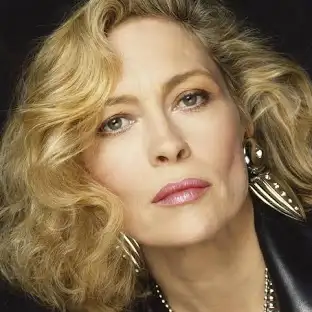
Michal J Pollard (C.W Moss)
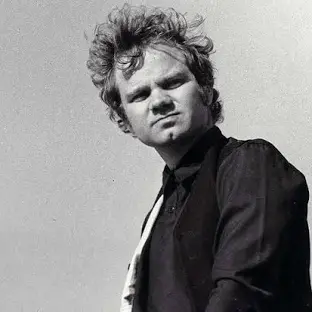
Gene Hackman (Buck Barrow)
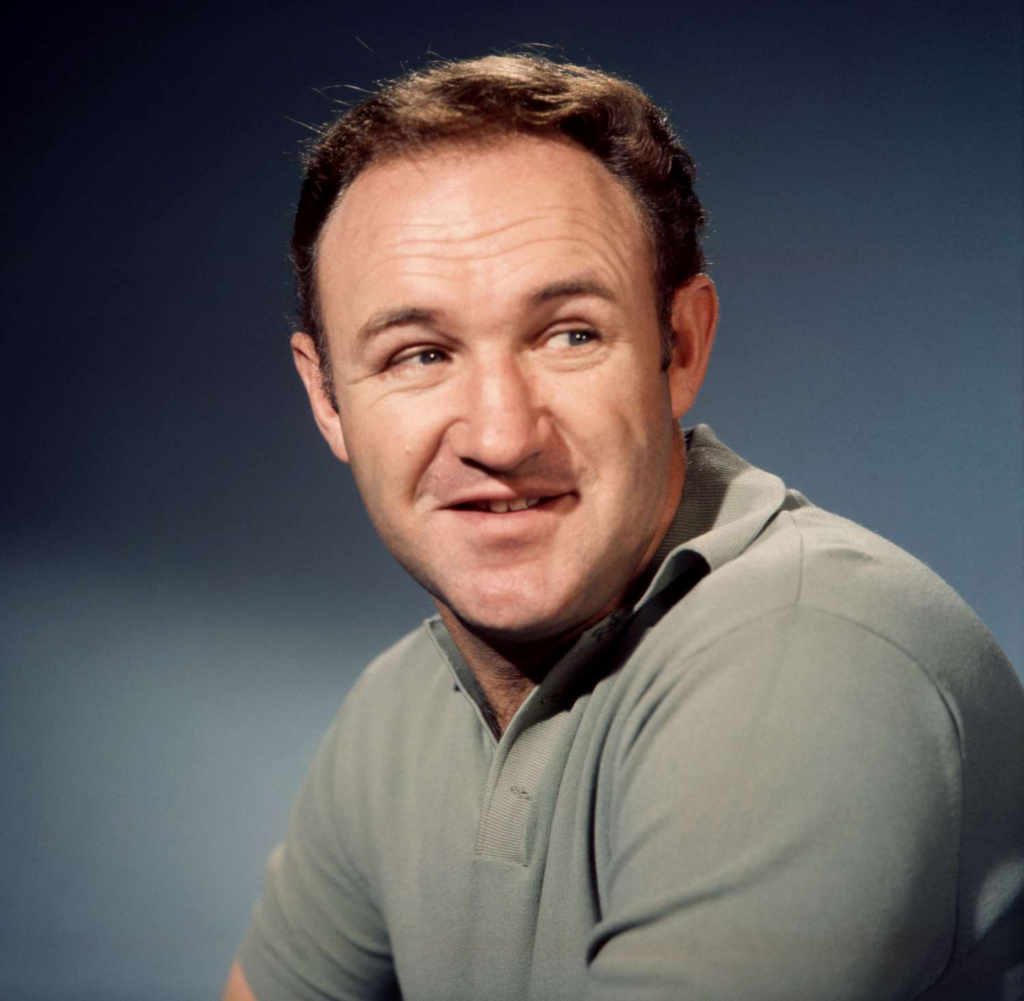
Estelle Parsons (Blanche Barrow)

Denver Pyle (Frank Hamer)
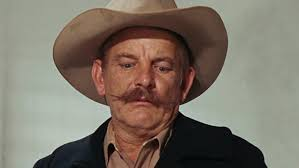
Dub Taylor (Ivan Moss)

Gene Wilder (Eugine Grizzard)
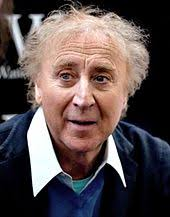
Wilder played a minor role in Bonnie and Clyde as his debut role before earning lobal recognition for his role as ‘Willy Wonka’ in Charlie and the chocolate factory (1971)
Star vehicle: a film that utilises an actor’s fame to promote the film, a film specifically made with an actor’s skill set in mind to show off their known skills and versatility.
Casablanca is a star vehicle for Humphry Boggart, he had previously not played the leading man and was often playing in gangster films. Casablanca highlighted his versatility and proved he had the skills to be a leading man. Casablanca was also Ingrid Bergman’s breakout film as she was previously quite unknown, it can be said it was also a star vehicle for her to breakthrough into the industry
Bonnie and Clyde was a star vehicle for Warren Beatty, he was the producer of the film while starring in it, he was responsible for hiring the director (Arthur Penn). He also had bought the script. Faye Dunnaway’s breakout role was as Bonnie as like Bergman she was also much more unknown than their male co-stars.
Locations: Bonnie and Clyde was filmed on location and not on a warner brothers backlot. The film was shot in Texas to add historical accuracy as the real Bonnie and Clyde were from Texas in addition to lower funds. The location filming adds more realism as they are not constructed, idealised setting. During the 1940s, America was living though the great depression. Bonnie and Clyde gives an accurate depiction of what peoples lives were like and had become after the wall street crash. The cars used in the film had also been loaned.
Costumes often showed 1940s fashion, specifically the gangster outfits. Bonnies look was quite 60s and became a fashion icon for women when the film came out, as many lost weight and cut their hair into bobs.
Editing: Bonnie and Clyde begins with a sequence of shots starting with an extreme close up of Bonnie’s lips, which is unlike classical Hollywood as there is also no establishing shot. The opening shot connotes to her knowingness of her attractiveness and her care into her looks. The camera then pans out into a close up of her face in the mirror. Close ups and mid shots are then used to follow her walking around the room, these shots are used to show her nudity without directly showing it. We then see her hitting the bedstead to mimic how she feels trapped in her current life as the bars on the bedstead reflects being behind bars in a jail. The only long shot in this sequence is when Bonnie is at the window, watching Clyde and speaking too him, which uses shot reverse shot ( a bit more conventional from Classical Hollywood) This opening sequence allows the audience to see the two main characters in depth, and breaks all the conventions of editing in the Classical Hollywood style. Editing in Bonnie and Clyde cam be very unconventional and inspired by the French new wave, however there are times the editing is very conventional and in the classical Hollywood style as it helps to portray the story. It breaks some of the conventions but doesn’t depart altogether from this style.
Sound: Music plays over credits and car chases (e.g 54-58 min) The music evokes the period of the Great Depression and highlights the setting of deep south America. The music is bluegrass style of music played with a banjo. It has roots in Mississippi, with afro American influence. The music is upbeat and light in tone with no vocals. The music is used to change the mood of the scene as we have the upbeat bluegrass music over the char chase and the original shot of the ice cream parlour, but when we see the ranger who is hunting down Bonnie and Clyde the music suddenly stops creating instant tension and apprehensive as the audience can predict how the film may end
Sound Bridge (J-cut) Music that covers a scene change
Dede Allen (editor) was one of the first people to use a sound bridge, she was an innovator.
Foley sound diegetic sound, sound effects. When Clyde is teaching Bonnie how to shoot there are sound effects from the gun (14min). The extreme loudness changes the mood. As the violence increases, the soundtrack increases in volume. Shootouts are very loud and violent and the loudness of the Foley sound is deliberately heightened.
J-cut, sound comes first L-cut, image comes first
Critical score: 8/10
I enjoyed the film but I think the ending was unnecessarily graphic as we watch Bonnie and Clyde get aggressively shot without dying instantly as we see Clyde roll over in agony and Bonnie’s body fall out the car. However apart from this I enjoyed the film as it caused continuous apprehension to if they would survive another close encounter.
Stand out scene: I selected this scene where Bonnie attempts to leave Clyde and the other criminals but he chases her and they reunite in a field. This scene stands out to me as, for me it is the most prominent display of emotion from Clyde towards Bonnie as he is put in a position where he could have to continue alone and how he’d struggle. I also like the angle of this shot as due to the low angle tilting upwards we perceive Clyde in a more vulnerable position highlighting his care for Bonnie
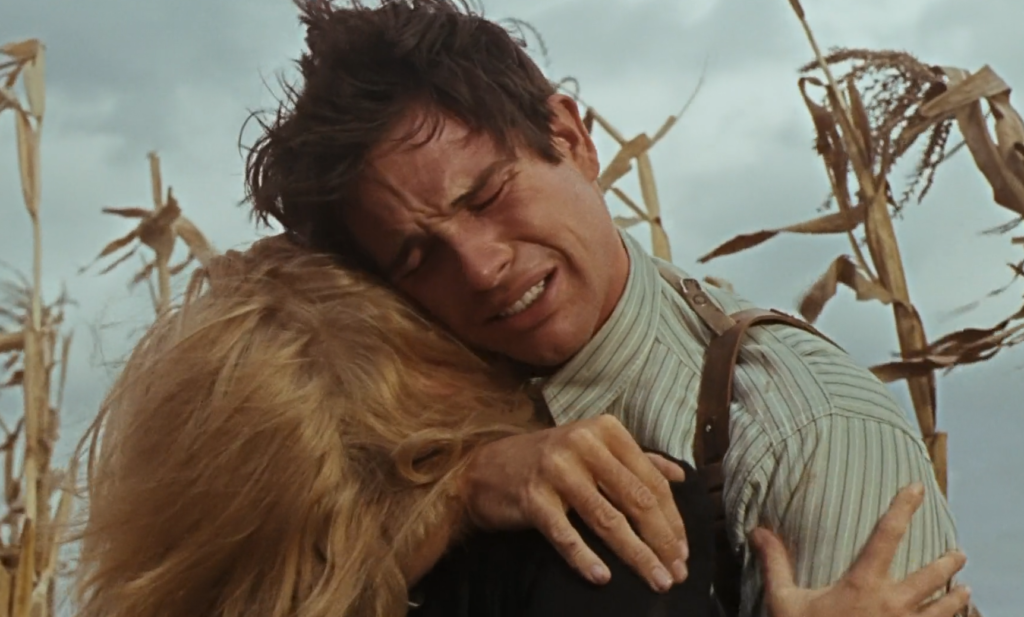
What is meant by the cinematic term French New Wave?
A film movement that began in 1958 and lasted into the late 1960s, known for its change in conventional filmmaking techniques. Many of the directors involved in this movement began as film critics for Cahiers Du Cinema, a French magazine that promoted new ideas through experimentation and innovation. It was a rejection of mainstream cinema and old Hollywood, a youthful movement driven by young people who were passionate about film overall. Preference for directors to be the artistic driving force and be credited rather then the studio and stars.
What specific stylistic and structural elements are present in French New Wave films?
French New Wave films often utilized natural light, used actors with less experience, improvisation, voice overs (non-diegetic) and real locations. This was a result of the low-budget nature of the films in addition to creating a strong feel of realism. For technique, handheld cameras contributed to the distinctive, more naturalistic style of these films as well as giving a doctumentryesque aesthetic. Jump cuts, often used by Jean-Luc Godard, became a distinct reflection of the movement, leading other filmmakers to challenge conventional filmmaking methods, and breaking through into mainstream cinema while working with low budgets and being restrained by the limited amount of money available to them. Democratisation style of cinema, allowing anyone to be a film-maker and create films.
Which directors and films from the French New Wave influenced Arthur Penn as he was making Bonnie and Clyde?
Directors François Truffaut and Jean-Luc Godard had a large impact on Arthur Penn throughout the making of Bonnie and Clyde. Originally, writers Robert Benton and David Newman initially approached them to direct the film, however they declined. Two of Truffaut’s films, Shoot the Pianist (1960) and Jules et Jim (1962), were particularly influential on Penn throughout production. French New Wave films were known for breaking traditional cinematic rules, Bonnie and Clyde echoed this by portraying two lovers who committed crimes consisting of robbery, burglary, and murder, stepping away from the usual depiction and representation of law-abiding American citizens. The turbulent nature of their relationship also reflected the movement’s shift from conventional storytelling. Bonnie and Clyde was a character study, historically based but far from historically accurate. Music was prominent in the scenes of their escapes in the van, this music was fast-paced banjo music (bluegrass music). It brings a comedic element to these dramatic scenes.
Identify 3 scenes from Bonnie and Clyde where stylistic links are created with French new wave cinema, explaining why this was the case

Location filming is often used in Bonnie and Clyde, embracing the French new wave style of filmmaking as it relies less on studios to create film but rather real places to create the set of the film.

Natural lighting is common in Bonnie and Clyde, as the normal sunlight is most prominent, this gives the film a more naturalistic look. This links to the French new wave as the natural light enhances the classic low-budget nature of the French new wave.

Jump cuts were seen as a trademark of the French new wave era, they were well used in Bonnie and Clyde especially before their deaths at the end of the film. The camera jumps from close-up shots of Bonnie and then to Clyde of them looking at each other and then to the police ready to shoot them, as well as some scenery shots leading into their separate deaths. By using jump cuts, it creates a tense atmosphere and dramatize their deaths.
Humphry Boggart (Rick Blaine)

Boggart was already a star before his performance in Casablanca as he had frequent roles in gangster films, such as “Dead end” and “The petrified Forrest” before this he had been in Broadway shows. I think he was cast as he was already known to be a good actor.
Ingrid Bergman (Ilsa Lund)
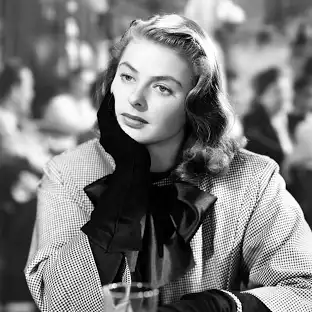
Bergman had previously acted in films in Sweden, she was known for her good looks, kindness and European accent. She became a star overnight after peforming in her first film in English, a remake of “Intermezzo” a film she had previously stared in Sweden. I believe she was cast due to her good looks and star-status.
Paul Henreid (Victor Laszlo)

Developed a passion for acting while still in school, and began acting in Vienna. He was in films and plays across London and Vienna such as “The madman of Europe”. He was a prominent anti-Nazi causing his assets to be seized. He left to USA with his wife and acted in a few plays before acting his most well known films, “Casablanca” and “Now Voyager”. I think he was casted as Lazlo because of his passion and political stance.
Claude Rains (Captain Renault)
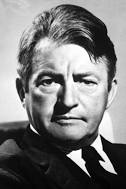
Rains began acting on stage in London and due to his expressive face and clear voice he was cast in “The invisible man”. He played a number of both leading and supporting roles in many genres before being in “Casablanca”.
Conrad Veidt (Major Strasser)

He appeared in many British films such as “The thief of Bagdad” before immigrating to the United States where he was recognised for his talent and therefore casted in “Casablanca” which was the last film to be realised in his lifetime.
Sydney Greenstreet ( Signore Ferrari)
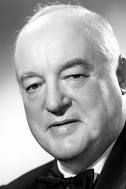
Greenstreet did not appear in films until the age of 61 after previously performing on stage. He began working for warner bros in 1941 in “The maltease falcon” which also featured Humphry Boggart who a year after would peform alongside again in “Casablanca”. He acted all through having diabetes and a kidney disease.
Peter Lorre (Ugarte)

Lorre eventually settles in Hollywood and was featured in many Warner Bros crime films, such as “Mad Love” and “The maltease falcon” He was very close friends with Boggart and they later acted together in “Casablanca”
S. Z. Sakall (Carl)

He began a career in films debuting in “Its a date” and “Ball of fire” leading him to be noticed by Warner Bros, where he turned down his role in “Casablanca” three weeks after filming had begun as he “hated it”. He eventually accepted the role.
Madeleine Lebeau (Yvonne)

Lebeau made her Hollywood debut a year before “Casablancas” realise, she was cast in “Hold back the dawn” where Warner Bros gave her a contract to feature in many films including “Casablanca”
Dooley Wilson (Sam)

His role in “Casablanca” was his most well-known peformance but he also previously was a musician touring London and Paris as he was the leader of a band.
Joy Page (Annia Brandel)

“Casablanca” was Page’s debut film, she originally thought the script was old-fashioned and cliché and she got the role on her own, with Warner Bros reluctant approval. Yet she did not land a contract and didn’t appear in another Warner Bros film.
John Qualen (Berger)
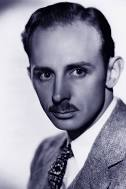
Qualen reached Broadway in 1929 before his film debut began as a screen adaptation to a play he had previously performed on stage. He became a star and appeared in over 100 films over his career including “Casablanca”
General notes:
The film was not expected to become so beloved and a “classic” it was by luck
Casablanca is a clear representation on “factory-like” filmmaking and is considered one of the best 1940s, WWII films.
The script was made up and written on a daily basis, the ending was not written until the last day of filming and the story was not well known.
Humphry Boggart (Rick) was unexperienced in this kind of role as he had only previously played in gangster films, and he was often in a bad mood on set due to the lack of preparation.
Curtiz was a Hungarian refugee, and the extras who played fellow refugees on set were real.
Locations: The location shots in Casablanca are incredible, as despite being shot in Hollywood, the Moroccan city of Casablanca is well portrayed and audiences are unable to tell that it wasn’t filmed there. For example, the main street is shown as a dessert due to the dry, hot climate adding to the story by reflecting the characters who stay in Casablancas feeling desperate.
Diagetic sound if very prominent in Casablanca through the high amount of dialogue and the music played at Rick’s, the music played by the character Sam creates an easy-going social atmosphere whereas a large amount of dialogue has very serious undertones.
The film combines multiple aesthetics such as film noir and melodrama to make its unique aesthetic that creates a feeling of love and longing through the foggy runway and dim lighting effects created by both high and low key lighting. The aesthetics create an exotic environment.
Women:

In Casablanca, women were represented to rely and follow their husbands and are seen to be less important compared to them. The film is very male dominated as it was set during WW2 where men were widely seen as stronger and more powerful, the female characters are either made to be perceived as victims to the audience or as a form of trophy to the men. They are often seen in recreational roles and do not work.
Men:

Men are portrayed very stereotypically, as dominant and powerful, they are all seen in professional roles such as police officers, army members and business owners, contrasting to the women in the film who are rarely seen to be working.
Authority figures:
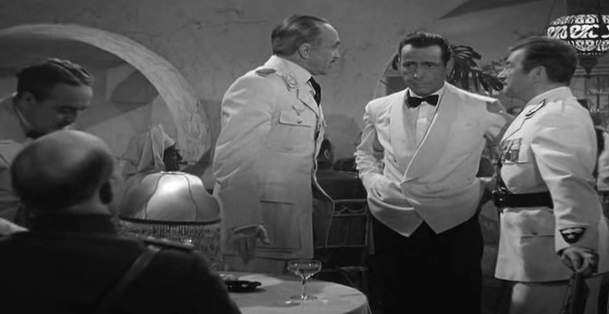
Many of the authority figures appear to be quite corrupt and self absorbed, they are represented as people who do things more for their own gain instead of trying to keep the civilians safe. This is seen when the officers shut down Ricks for “gambling” as it is not allowed yet they are ironically handed their winnings while clearing the nightclub. Their authority is consistently abused without the film, most often by Captain Renalt, who gets to drink for free after curfew, gambling and he uses his power to gain money or sex from vulnerable refugees.
People of colour:

The representation of people of colour is very limited in Casablanca as the only significant character is Sam, who plays the piano at Rick’s, and is a faithful friend to him. This could create the idea that POC are unable to make it to Casablanca or that they are unwelcome there, due to the racism at the time
Americans:

Rick is the most significant American character in the film as he owns “Rick’s Cafe Americain” reflecting his pride for his nationality. The character Rick represents Americans to be passionate, seen through his love affair with Ilsa, as well as being calm and laid-back.
Europeans:

Europeans are represented differently in Casablanca. For example, the Germans and the French are represented to have high authority and seen as powerful and should be feared. Whereas other European characters completely juxtapose this as they are shown as desperate refugees who show unwavering effort to avoid the war and find a safe place to stay.
Allies: UK, USA, USSR (Russia)
Axis: Japan, Germany, Italy
France, at the start of WW2 France was an allied power, yet in June 1940 the Germans invaded and succeeded leading France to surrender and become occupies. The Free French however wanted to continue fighting so they still fought for the allies. Vichy France is a territory (around half) it has its own government but is a puppet for the Germans.
Vichy France controls Casablanca, despite being in Morocco it is still controlled by Vichy France.
World War II begins on September 1st 1939. America didn’t join the War until December of 1941 after an unprovoked attack on Pearl Harbour by Japan.
Operation Torch was an allied invasion of the French North Africa that took place on November 8th 1942 it was a compromise that led to victory in North Africa and allowing American armed forces the opportunity to begin fighting against Nazi Germany and Italy.
Casablanca premiered internationally on November 26th 1942 in New York City. It goes on general release in January 1943.
“It captured the Zeitgeist” This means that it captured and defined the spirit/ mood of a particular period of history (in Casablanca’s case WWII) shown by the ideas and beliefs of the time.
Casablanca Conference was from January 14th to January 24th 1943 between British prime minister Winston Churchill and Americas president Franklin D Roosevelt. They wanted to discuss the Allied forces strategy for the next phase of WWII. This has serendipity as this was also when Casablanca was being shown in cinemas.
In the cinema, they had movie reels similar to the news now. Before the main picture you would see a short reel showing the worlds current affairs.
Why did filmmakers and producers move to Hollywood?
They moves to Hollywood due to the easy access to a variety of different terrain that can be films, it’s reliable sunny clear weather that can be used year round for shooting.
Name some of the big stars, directors and pictures from the silent era
Stars: Clara Bow (New York, USA), Mary Pickford (Toronto, Canada)
Directors: Charlie Chaplin(London, England), D.W Griffith (Kentucky, USA)
Pictures: The Gold Rush, The general
In what ways were the early Hollywood studio system like a factory, production line or the premier league?
Actos may be working for one company but if they are not performing their contract could be cut no matter their star status, actors had little control over their career as they could be loaned similarly to football players now.
When and what was the first “talking picture”
The jazz singer, it came out on October 6th 1927

Why did the end of the silent era cause problems for some performers working in the film industry?
Some voices may have been unsuitable and their acting abilities decreasing as they had been performing silently and do not have the talent when using their voice, as well as not understanding the technology of recording sound.
What was happening in America and the world during this time?
WW1 had just ended (in 1918) so many countries were recovering, The American economy crashed after the wall-street crash leading to the great depression in 1929.
The Hollywood studio system, the golden age of Hollywood
1930-1947
What were the big 5 studios and what were they known for?
MGM: Made high budget musicals, comedies and melodramas as well as book to screen adaptations, using big stars. For example, “the Wizard of Oz”
Warner Bros: Branded themselves as the “studio of the working class” and made low budget melodramas, movies set during the Great Depression and gangster movies such as The Public Enemy
Paramount: Known as the most European studio as many filmmakers came from Germany or the UK. They gave more freedom to filmmakers and made “The sign of the cross”
Fox: Had a director named John Ford who won back to back oscars for best director and film, for “How green is my valley” and “The grapes of wrath”
RKO: Created many musicals and films spanning many genres including comedy or action. RKO was also responsible for one of the most influential films of all time “Citizen Kane”
Censorship: HAYs Code
The HAYs code was implemented and written up in 1930, this was seen as a set of rules for what could and couldn’t be included in the films such as forbidding the use of racial slurs, profanity, obscenity and the showing of sexual assault. In addition, the code also limited the use of nudity, criminality and graphic violence. For example, a kiss on screen could not last longer than 7 metres of film, and one actor had to have a foot on the floor in order to prevent showings of a sexual nature.
Classical Hollywood style
What is meant by the invisible style of storytelling?
Refers to conceal artistic choices to give films a natural story to give audiences, this can be done through lighting and camera work to make films more immersive.
What does continuity mean?
When the sequence of shots are edited together to be fluid and unified most commonly, in chronological order.